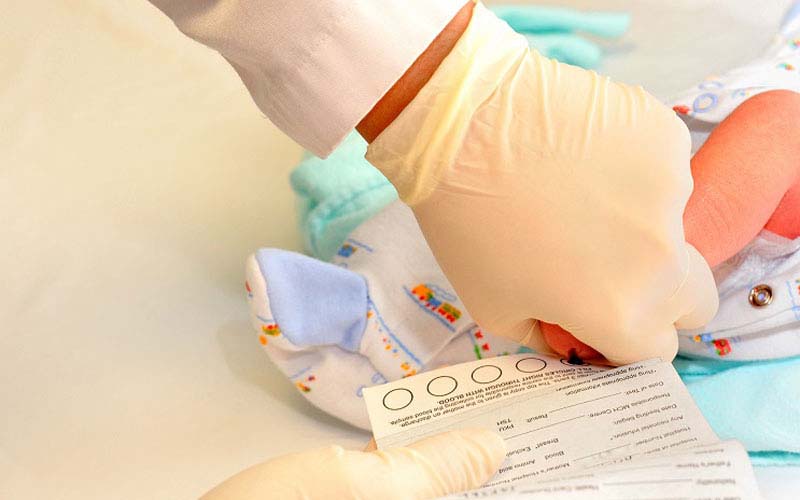You are viewing the article What is Galactose Metabolism in Infants? at Tnhelearning.edu.vn you can quickly access the necessary information in the table of contents of the article below.
Neonatal galactose metabolism disorder is an inherited disease that can be life-threatening in young children if not treated promptly. Today, let’s learn about this disease with Tnhelearning.edu.vn through the following article.
What is Galactose Metabolism in Infants?
Galactose metabolism disorder (Galactosemia) is a rare genetic disease in infants. The prevalence of common disease in children is 1 in 50,000 children . Galactosemia is a chromosomal disorder that is inherited as an autosomal recessive gene . The disease makes galactose in breast milk or other milks, when entering the body, cannot be converted into glucose to provide energy for the baby, thereby causing glucose accumulation and expression in the organs of the body.
Mechanism of galactosemia progresses through 3 stages:
- Stage 1 : Attaching phosphate to galactose, converting galactose to galactose-1-phosphate by the enzyme galactokinase (GALK).
- Stage 2 : Galactose-1-phosphate combines with uridyl diphosphoglucose (UDPG) to form Glucose-1-phosphate and UDP-Galactose, catalyzed by the enzyme galactose-1-phosphate uridyl transferase (GALT).
- Stage 3 : UDP-Galactose is converted to UDP-glucose by the enzyme UDP-galactose-4-epimerase (GALE).
 What is galactosemia? Mechanism of disease formation
What is galactosemia? Mechanism of disease formation
Manifestations of galactose metabolism disorder
The presentation of galactosemia often depends on the classification of the disease. As follows:
Classical galactosemia (Type I):
- Poor suckling or skipping feed
- Diarrhea, vomiting
- Comatose
- Decreased muscle tone
- Clinical manifestations such as: jaundice, subcutaneous hemorrhage, hepatomegaly, cataracts
Galactosemia type II: In this form, children often have milder manifestations than the classic form and may have some symptoms such as cataracts.
Galactosemia type III:
- Slow physical and intellectual development
- Decreased liver and kidney function
- Cataract
 Manifestations of galactose metabolism disorder
Manifestations of galactose metabolism disorder
Galactosemia Screening Test
Screening for Galactosemia as part of the newborn screening program is performed on the first day of life. The doctor will take a blood sample from the heel 24 – 72 hours after birth , the amount of blood is about 1-2 drops , so it does not affect the health of the baby. Then perform tests including:
- Measure the concentration of galactose in the blood (galactose and galactose-1-phosphate).
- Measurement of GALT enzyme activity in a blotting blood sample.
- If galactose levels are elevated and/or the GALT enzyme activity is lower than normal, additional specialized tests should be performed to confirm the diagnosis.
In addition, people also test for galactosemia with venous blood or urine . However, this approach is not as common in clinical practice as heel blood collection.
 Galactosemia Screening Test
Galactosemia Screening Test
How to prevent galactosemia?
There are many ways to prevent galactosemia in newborns divided into 2 stages before and after birth.
At the prenatal stage : You can conduct genetic screening if there is a family member with this disease before to understand the probability of having the disease as well as prepare the necessary knowledge to take care of the baby. reasonable.
In the postpartum period:
- If the child shows signs of nausea, vomiting, fussiness, immediately stop the milk that the child is drinking and take the child to a medical facility for examination.
- Have regular eye exams for children to avoid the risk of cataracts.
- Monitor the weight of the child regularly, if the child is found to be slow to gain weight or gain weight, take the child to a medical facility for examination.
 How to prevent galactosemia?
How to prevent galactosemia?
Recently, Tnhelearning.edu.vn has learned with you about galactose disorder in children, a rare disease that leaves many serious complications. We hope that you have gained useful medical information through the above article.
Source: Vinmec International General Hospital
Tnhelearning.edu.vn
Thank you for reading this post What is Galactose Metabolism in Infants? at Tnhelearning.edu.vn You can comment, see more related articles below and hope to help you with interesting information.
Related Search:

